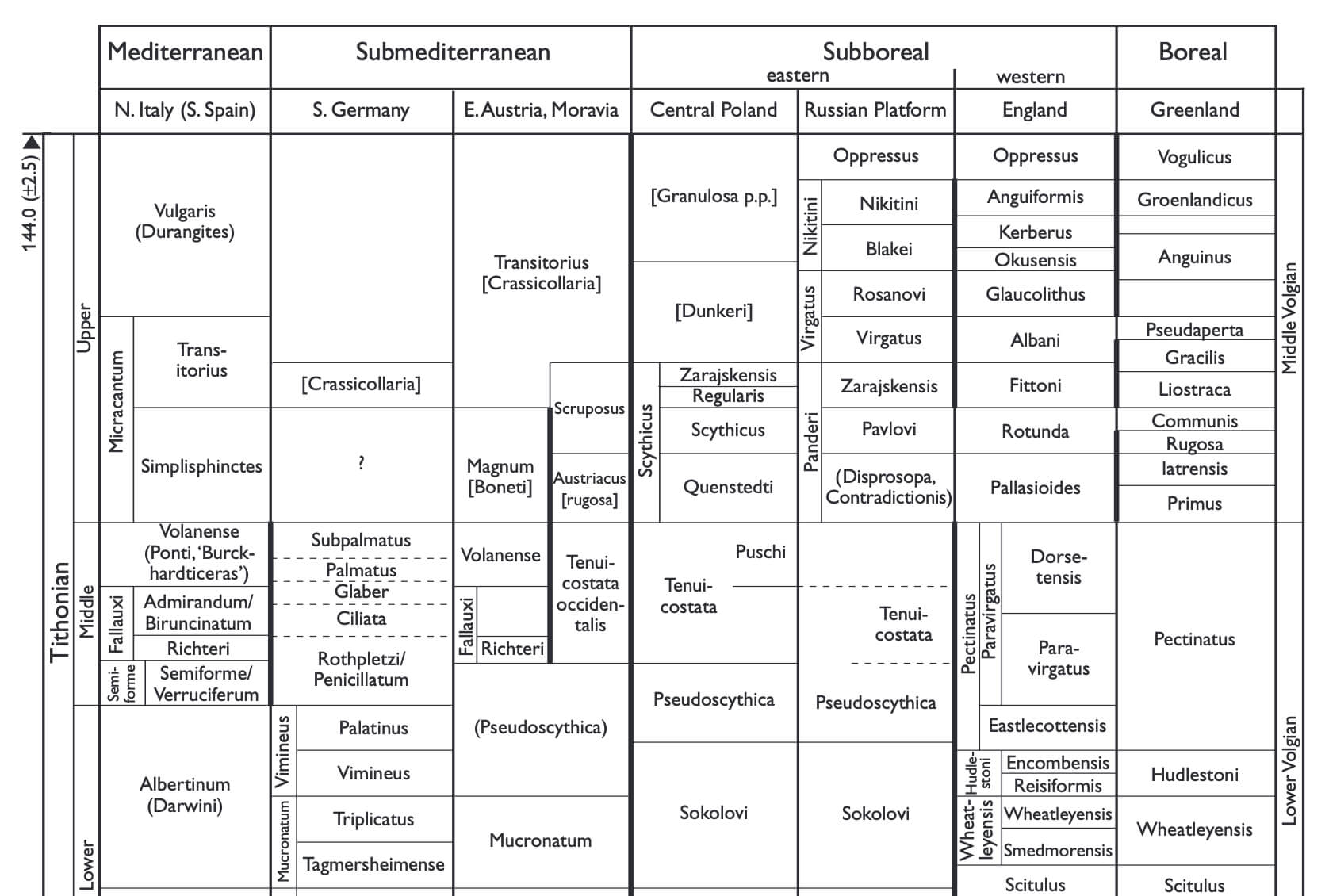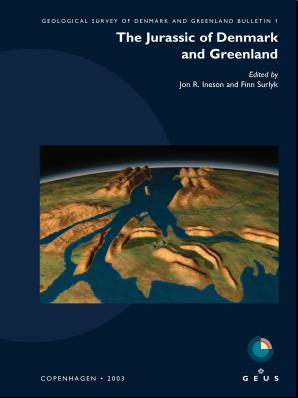
How to Cite
Share
Abstract
In the last 40 years, the stratigraphy of the Upper Jurassic of Europe has received much attention and considerable revision; much of the impetus behind this endeavour has stemmed from the work of the International Subcommission on Jurassic Stratigraphy. The Upper Jurassic Series consists of three stages, the Oxfordian, Kimmeridgian and Tithonian which are further subdivided into substages, zones and subzones, primarily on the basis of ammonites. Regional variations between the Mediterranean, Submediterranean and Subboreal provinces are discussed and correlation possibilities indicated. The durations of the Oxfordian, Kimmeridgian and Tithonian Stages are reported to have been 5.3, 3.4 and 6.5 Ma, respectively. This review of the present status of Upper Jurassic stratigraphy aids identification of a number of problems of subdivision and definition of Upper Jurassic stages; in particular these include correlation of the base of the Kimmeridgian and the top of the Tithonian between Submediterranean and Subboreal Europe. Although still primarily based on ammonite stratigraphy, subdivision of the Upper Jurassic is increasingly being refined by the incorporation of other fossil groups; these include both megafossils, such as aptychi, belemnites, bivalves, gastropods, brachiopods, echinoderms, corals, sponges and vertebrates, and microfossils such as foraminifera, radiolaria, ciliata, ostracodes, dinoflagellates, calcareous nannofossils, charophyaceae, dasycladaceae, spores and pollen. Important future developments will depend on the detailed integration of these disparate biostratigraphic data and their precise combination with the abundant new data from sequence stratigraphy, utilising the high degree of stratigraphic resolution offered by certain groups of fossils. This article also contains some notes on the recent results of magnetostratigraphy and sequence chronostratigraphy.
How to Cite
Share
Downloads
Editors: Jon R. Ineson and Finn Surlyk
The Jurassic rocks of Denmark and East Greenland record the evolution of two discrete portions of the Mesozoic rift complex, now separated by the North Atlantic Ocean. The Jurassic of Denmark and adjacent areas occurs mostly in the subsurface and research has thus focussed [...]










